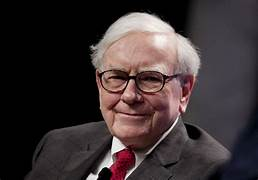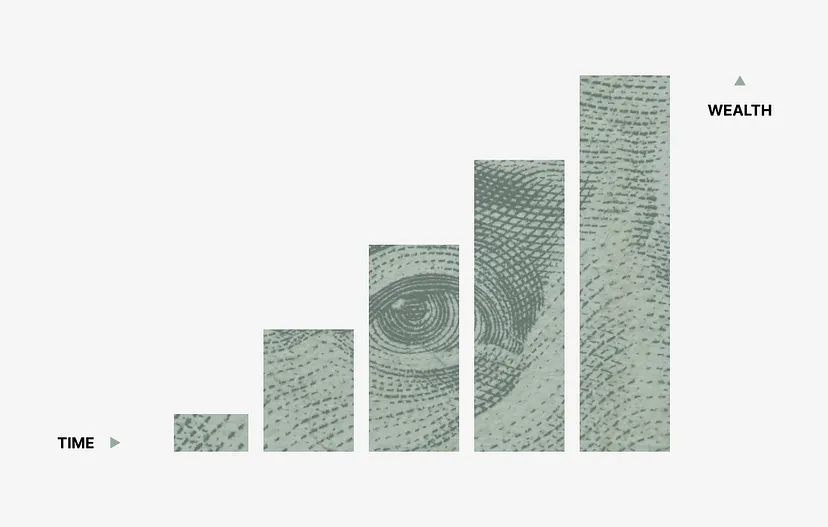Table of Contents
what is compounding?
Ever folded a piece of paper multiple times? If you did, you’d notice how quickly the thickness grows, illustrating the power of compounding. Just like the paper’s thickness multiplies with each fold, compound interest can significantly boost your investment over time. This concept is vital for understanding how small, consistent investments can lead to impressive financial growth.

Warren Buffett : God of compounding
Warren Buffett, one of the world’s richest people, is the chairman of Berkshire Hathaway, a company that’s among the top 10 in the U.S. by market value. He’s often called “the king of all investors.”
Here’s a surprising fact: 99% of his wealth came after he turned 52. Yes, it’s true, thanks to the power of compounding and smart investments.

Buffett started investing young and was a millionaire by 30. The key to growing his wealth from $1 million to over $100 billion was consistency and compounding. He made sure his investments gave a steady 22% return on average and chose assets that were safe and profitable in any market condition. This growth didn’t happen overnight; it was a gradual process with consistent returns each year, which compounded over time, making him a billionaire by 52.
Understanding compounding with real life example
To understand compounding deeply, let’s take the most infamous example to explain compounding to you!

Meet Ram and Shyam, our investment buddies. They both start with ₹1 lakh, looking to grow their money over 10 years at 10% interest per year. Ram goes with compound interest, while Shyam sticks to simple Interest. Fast forward 10 years, and Ram’s got ₹2,59,374—₹59,374 more than Shyam’s ₹2,00,000. That’s compound interest at work, folks!
But wait, there’s more! If you’re patient and let Compound Interest do his thing over decades, the results are mind-blowing. Like, investing ₹10 lakhs today could turn into ₹1.745 crores after 30 years. That’s not just growth; it’s like watching a magic beanstalk reach the sky!

To put it in real-world terms, imagine you bought one share of TCS today for ₹3740. If it grows at 12% annually for 30 years, that humble investment could balloon to ₹1,34,451. And if you dared to invest ₹1 lakh? Well, get ready for ₹35,94,964.13 after three decades. It’s like planting a money tree and watching it sprout branches!
Take a look at compounding in action when started at different dates:
“Compound interest is the eighth wonder of the world. He who understands it, earns it … he who doesn’t … pays it.” — Albert Einstein
So, remember the 8th wonder of the world—compounding. It’s reliable, sustainable, and makes a world of difference over time. Next time you’re tempted by quick riches, ask yourself: am I going with the flow of nature or against it? Trust in the power of time, patience, and good ol’ compound interest—your future self will thank you!
So, finally lets take a look at how to calculate compounding:
| = | final amount | |
| = | initial principal balance | |
| = | interest rate | |
| = | number of times interest applied per time period | |
| = | number of time periods elapsed |
Disclaimer: No Ram or Shyam were harmed in the making of this analogy, and all images used are purely for illustrative purposes. Happy investing!!
Cultural References and Practical Examples to Reinforce the Power of Compounding
Compounding is not just a financial concept; it’s a universal principle. Consider real-life examples like reducing bacteria in test tubes, which demonstrates exponential growth similar to financial compounding. Even relatable analogies, such as consuming chocolates leading to weight gain, highlight the universal applicability of compounding. By illustrating compounding in various contexts, we can better appreciate its power and relevance.

In conclusion, the magic of compound interest lies in its ability to amplify growth over time. Whether through financial investments or daily habits, embracing the principles of compounding and consistency can lead to remarkable results. Understanding and applying these concepts can transform your approach to wealth-building and personal development, making them invaluable tools for long-term success.
FAQs
1. What is the power of compounding?
The power of compounding is like a snowball effect for your money. It means that not only do you earn returns on your initial investment, but you also earn returns on the returns you’ve already made. Over time, this can lead to exponential growth, turning a modest investment into a substantial sum.
2. What is the 8-4-3 rule of compounding?
The 8-4-3 rule is a handy guideline for estimating how long it will take for your investments to double or grow by a certain percentage. In this rule, you divide 8 by your annual interest rate to estimate how many years it will take to double your money. For example, with an 8% interest rate, it will take about 8 years for your investment to double.
3. How do you explain the power of compounding?
The power of compounding can be explained as making your money work for you, not just once but repeatedly. It’s like planting a tree that grows fruit year after year, with each year’s fruit adding more fruit for the next season. This continuous growth boosts your overall returns significantly over time.
4. What is the power of compounding rule?
The power of compounding rule is a principle stating that the longer you leave your money invested, the more it will grow. This rule highlights the advantage of early and consistent investing, where your returns start earning their own returns, leading to accelerated growth.
5. What is the concept of compounding?
The concept of compounding involves earning returns not just on your initial investment but also on the accumulated returns from previous periods. This means your money grows faster as you reinvest your earnings, creating a cycle of growth that benefits from time.
6. What is the law of compounding?
The law of compounding refers to the financial principle that investments grow exponentially over time due to the reinvestment of earnings. It underscores how even small, consistent investments can grow significantly due to the compound effect.
7. What is compounding in law?
In legal terms, compounding refers to the act of settling or resolving a dispute or offense outside the court system. It involves reaching an agreement between parties to settle a matter, often resulting in a less formal resolution compared to a legal trial.
8. What is compounding and examples?
Compounding is the process of earning interest on both your initial investment and the interest that accumulates over time. For example, if you invest $1,000 at an annual interest rate of 5%, you’ll earn $50 in interest the first year. In the second year, you’ll earn interest on $1,050 (the original $1,000 plus $50 interest), resulting in even more growth. This compounding effect continues, leading to greater returns as time progresses.
Latest episodes
Leave a Reply